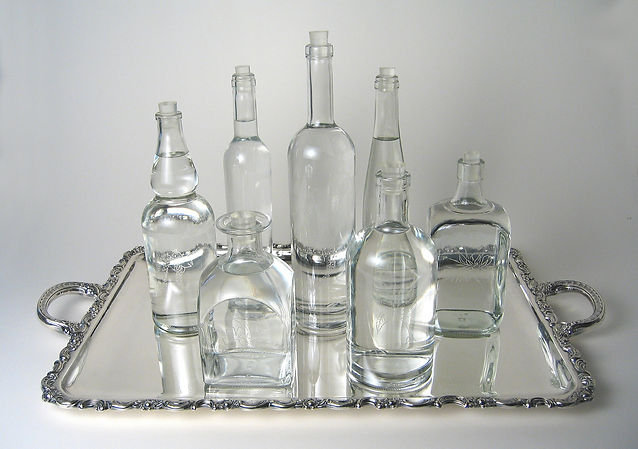Currently, I am finalizing about 20 new additions to my Pharmacopoeia series.
Mark Allen Soderstrom
CREATIVE PROJECTS

Dissolution, 2008
Bach Flower remedies, brandy, glass, silver plate platter.
15” x 27” x 16”
In the 1930’s Dr. Edward Bach, inspired by homeopathy, concluded that dew collected from flowers of certain plants would contain certain properties of that plant. The water's potency, Bach stated, was heightened if collected from flowers that were bathed in sunlight. The impracticality of dew collecting lead to steeping flowers in bowls of water in sunlight that would then result in a “mother tincture” that would contain an “energetic signature” of the flower. This would then be further diluted with brandy and water before actual use.
Bach believed that these concoctions would treat emotional, spiritual, and psychological conditions. Bach developed 38 distinct flower remedies in all.
Bach’s treatments were developed in “provings” similar to homeopathic testing whereby one practitioner perceives a particular result from the use of a given tincture and asks other practitioners if they can confirm that result based on their own experience. This method of testing is not recognized by the pharmaceutical industry as it contains inherent confirmation bias that could skew the results of testing. In the United States, Bach flower remedies are classified as dietary supplements and therefore do not require the double-blind testing required of conventional pharmaceuticals by the FDA.
Dissolution consists of a collection of specific remedies that would, if effective, cure the consumer of the type of magical thinking that these remedies are based on.
